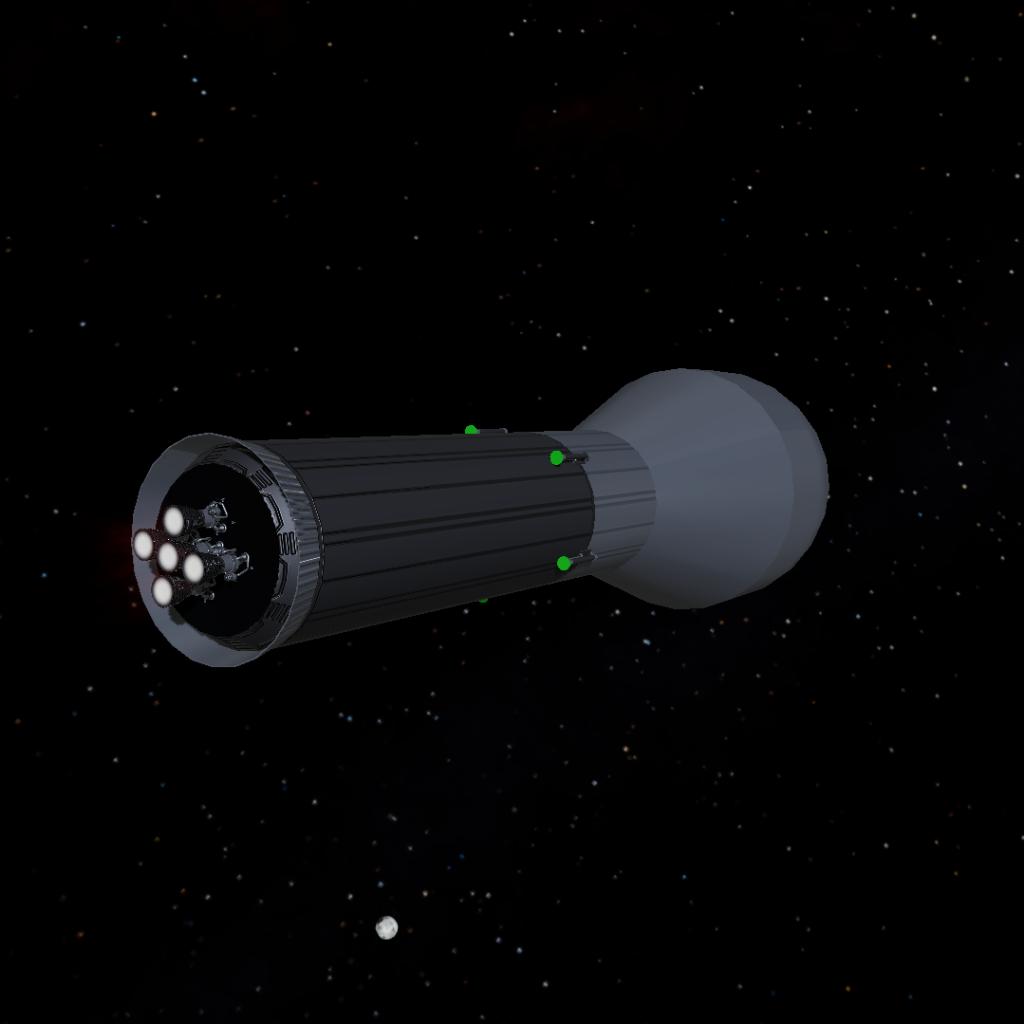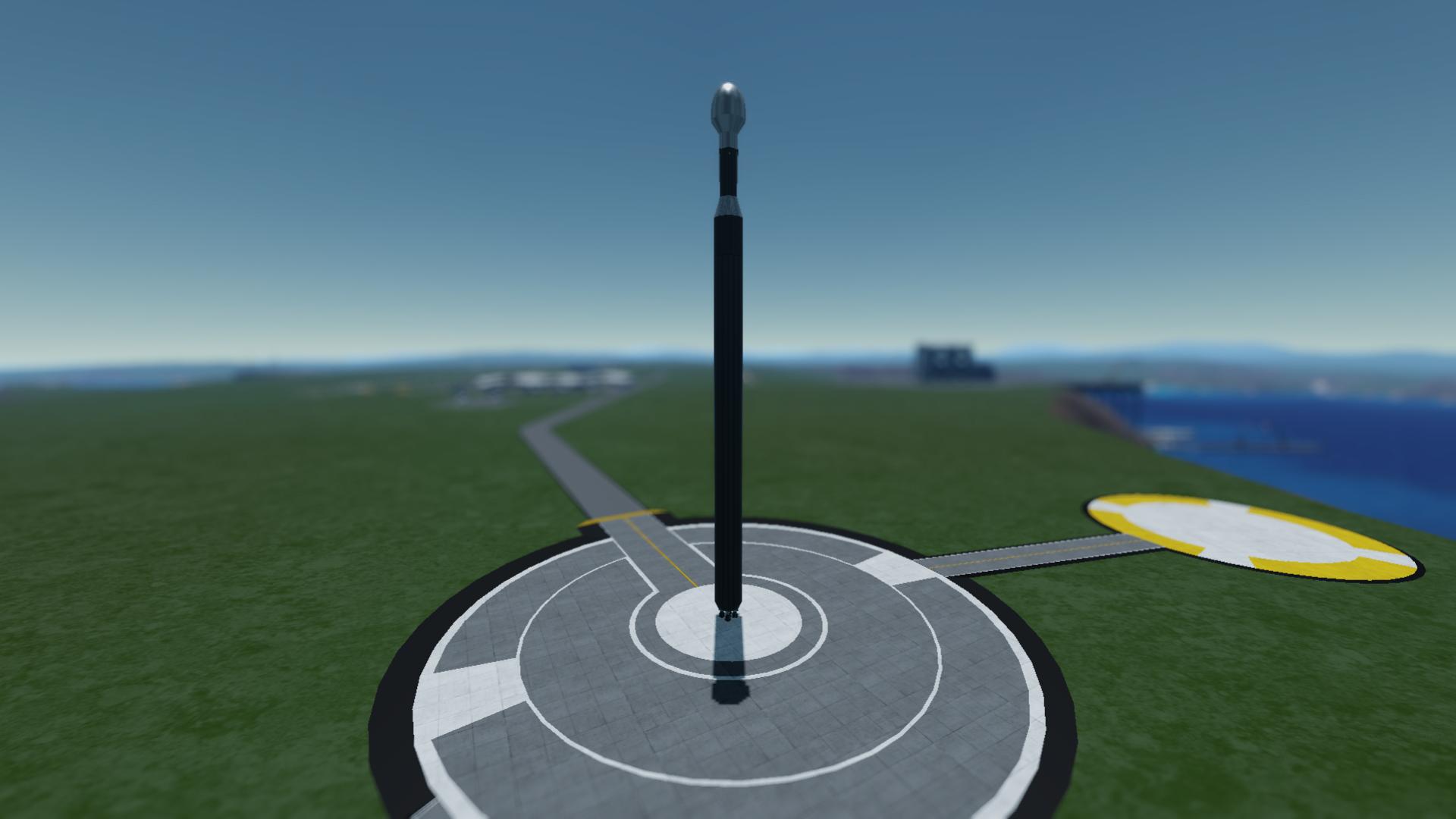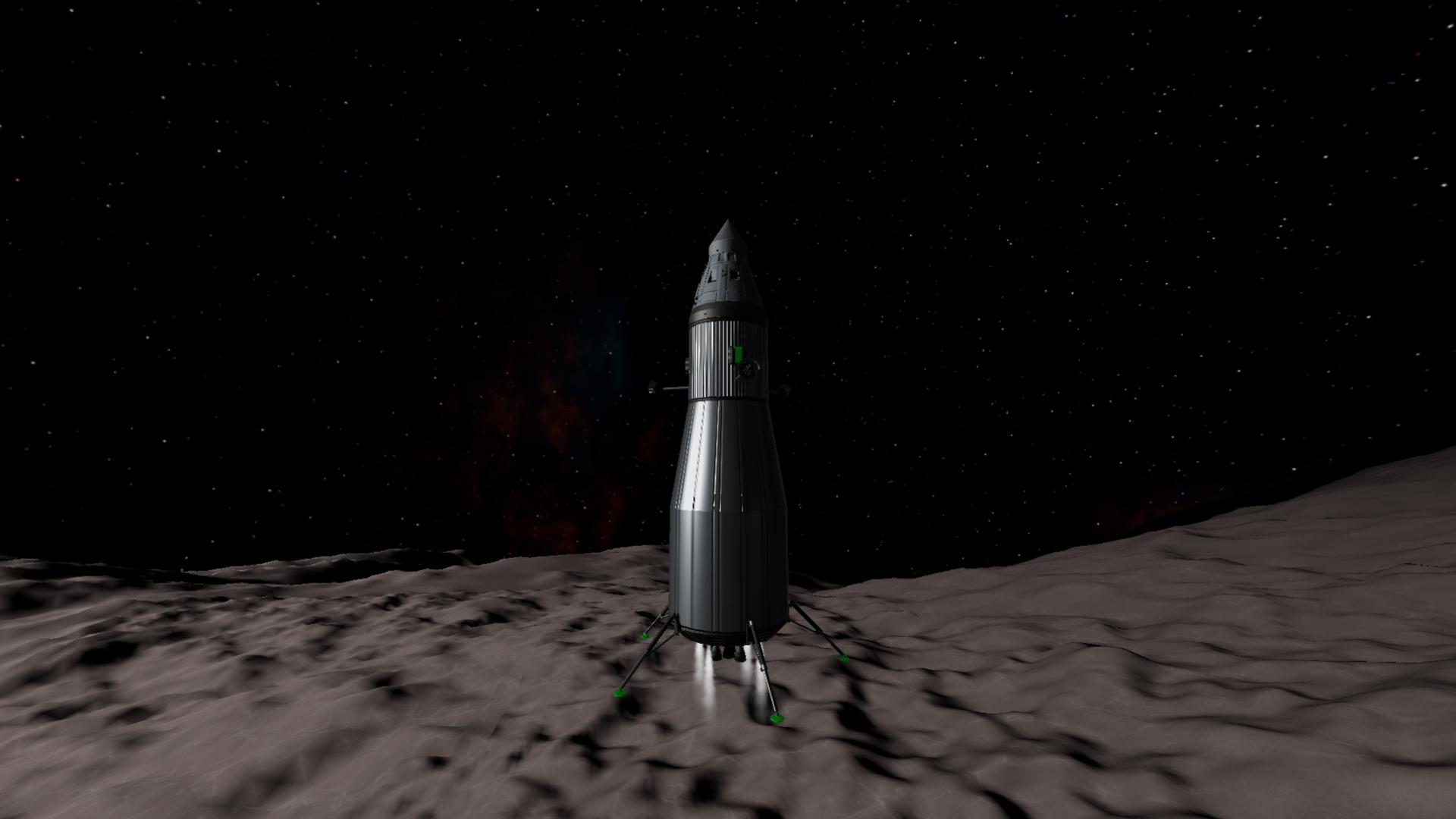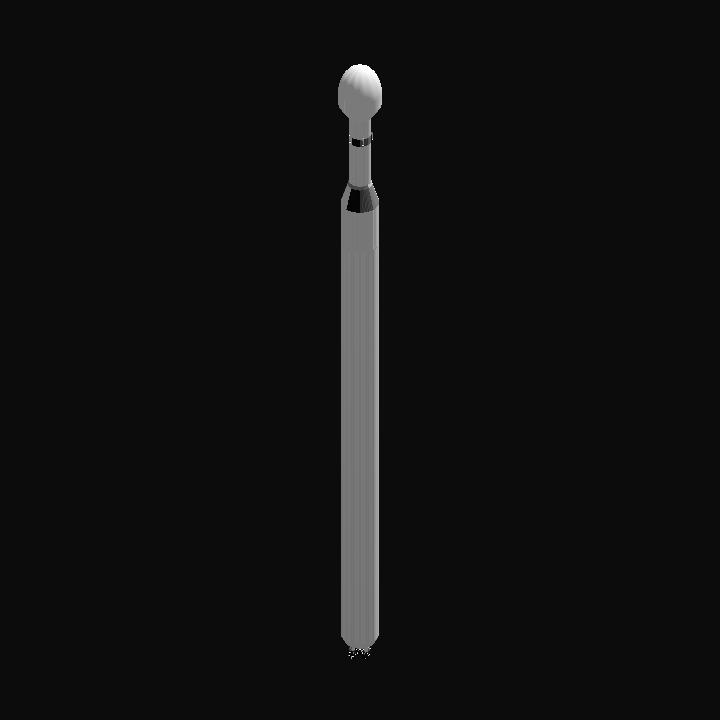Prepare for an extraordinary journey to the enigmatic "Handrews Comet" aboard a cutting-edge, three-stage rocket, a marvel of modern engineering designed for precision and power. This sleek vehicle, an amalgam of dark textured and coated metals, boasts a distinctive light green flair that encircles its robust frame, hinting at the advanced technology within.
Stage 1: Maxwell
The initial thrust for this ambitious mission comes from Stage 1, aptly nicknamed "Maxwell." This powerhouse is propelled by a formidable cluster of four "M1z" branded engines, each equipped with gimbal capabilities for precise steering, alongside a central "M1C" engine that provides unwavering, non-gimbaled thrust. Maxwell is fueled by hydrolox, a highly efficient propellant, and delivers an impressive 9.37 km/s of delta-v. Its primary objective is to execute the critical trans-Handrew injection burn, setting the rocket on its direct course toward the comet. With an ISP (specific impulse) of 420, Maxwell is engineered for maximum performance during the initial atmospheric ascent and beyond, ensuring the mission achieves the necessary velocity to escape Earth's gravitational pull and begin its interplanetary cruise.
Stage 2: Zenith
Following the successful injection burn, Stage 2, "Zenith," takes over, showcasing its own significant capabilities. Zenith is powered by a cluster of four "Z2" engines, each offering 5 degrees of gimbal for fine-tuned maneuvering, complemented by a single, fixed "Z2c" engine. This stage provides 3.18 km/s of delta-v, specifically designed for a crucial phase of the mission: deceleration upon reaching Handrews Comet's sphere of influence. With an ISP of 447, Zenith will precisely slow the spacecraft, ensuring a controlled and measured approach, preparing for the delicate landing sequence. Its role is paramount in transforming the high-speed interplanetary trajectory into a gentle descent, enabling a successful encounter with the comet's surface.
Stage 3: Alco and the Romeo Capsule
The final, most advanced segment of this rocket is Stage 3, christened "Alco." This innovative stage features a cluster of three "Dwarven Engines" alongside a unique "Dwarven Engine CMOD," providing an astonishing 3.58 km/s of delta-v. Alco's most remarkable characteristic is its exceptionally high ISP of 998, indicating incredible fuel efficiency, vital for the precise maneuvers required during proximity operations and potential surface activities on the comet.
To protect sensitive equipment during the rigors of launch and early flight, Stage 3 incorporates a detachable fairing. This vital component encases and shields the mission's crucial solar panels—essential for power generation in deep space—and the RTG (Radioisotope Thermoelectric Generator) mounts, which would provide continuous power for long-duration missions or operations in low-light conditions near the comet.
Once the rocket is safely in space and the immediate threat of atmospheric friction is past, this fairing will jettison, revealing the protected instruments.
Perched atop Alco is the "Romeo" capsule, a critical component rated for crew reentry. This advanced stage isn't just for landing; it's also designed for return, capable of ascending from the comet's surface and executing the necessary maneuvers to begin its journey back to its home planet, completing the full round trip.
Together, Alco and the Romeo capsule represent the pinnacle of this mission's design, enabling not only the intricate dance with Handrews Comet but also the potential for human exploration and a safe return home.
GENERAL INFO
- Created On: Android
- Game Version: 1.3.204.1
- Price: $1,557,525k
- Number of Parts: 100
- Dimensions: 224 m x 14 m x 14 m
PERFORMANCE
- Total Delta V: 16.1km/s
- Total Thrust: 46.0MN
- Engines: 14
- Wet Mass: 3.73E+6kg
- Dry Mass: 2.48E+5kg
STAGES
| Stage | Engines | Delta V | Thrust | Burn | Mass |
|---|---|---|---|---|---|
| 1 | 5 | 9.4km/s | 43.8MN | 5.2m | 3.73E+6kg |
| 2 | 5 | 3.2km/s | 2.1MN | 3.9m | 2.16E+5kg |
| 3 | 4 | 3.6km/s | 42kN | 1.36hours | 68,804kg |









Wow, nice description, lore and rocket man!